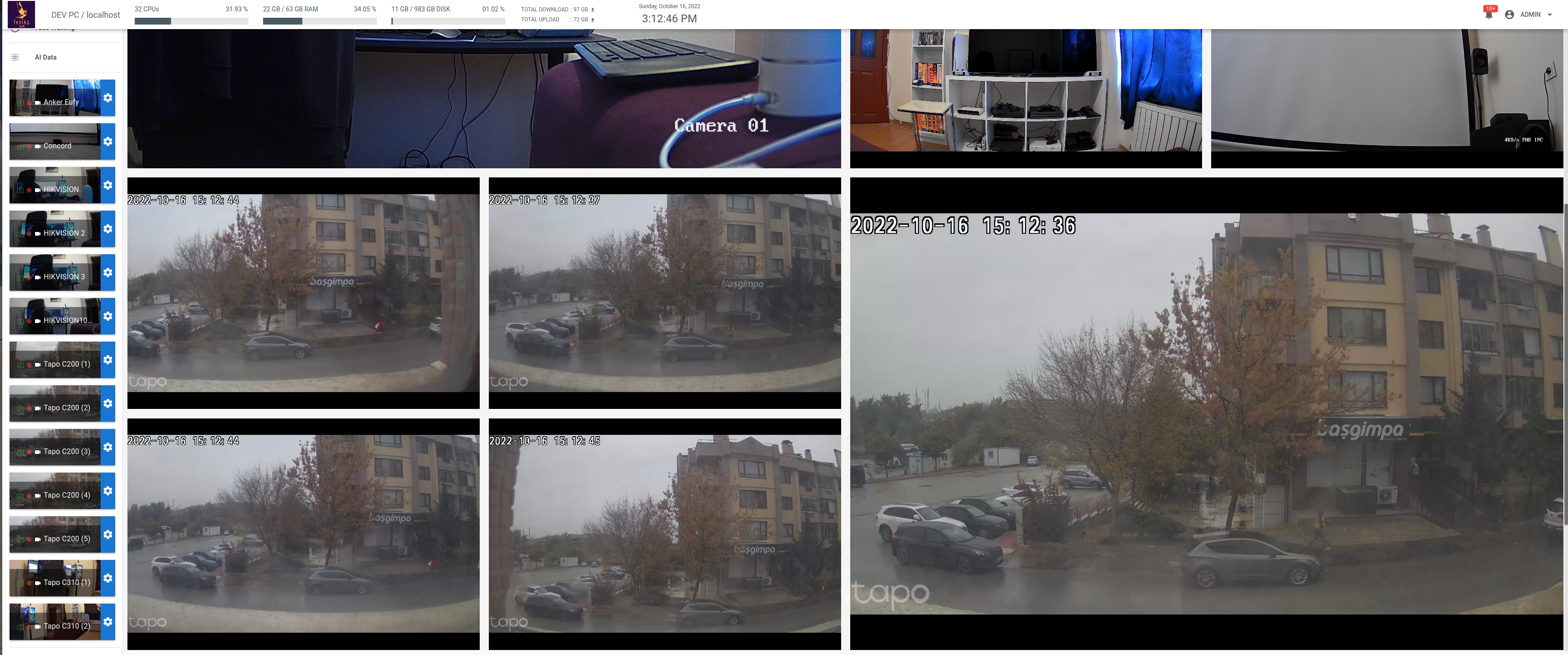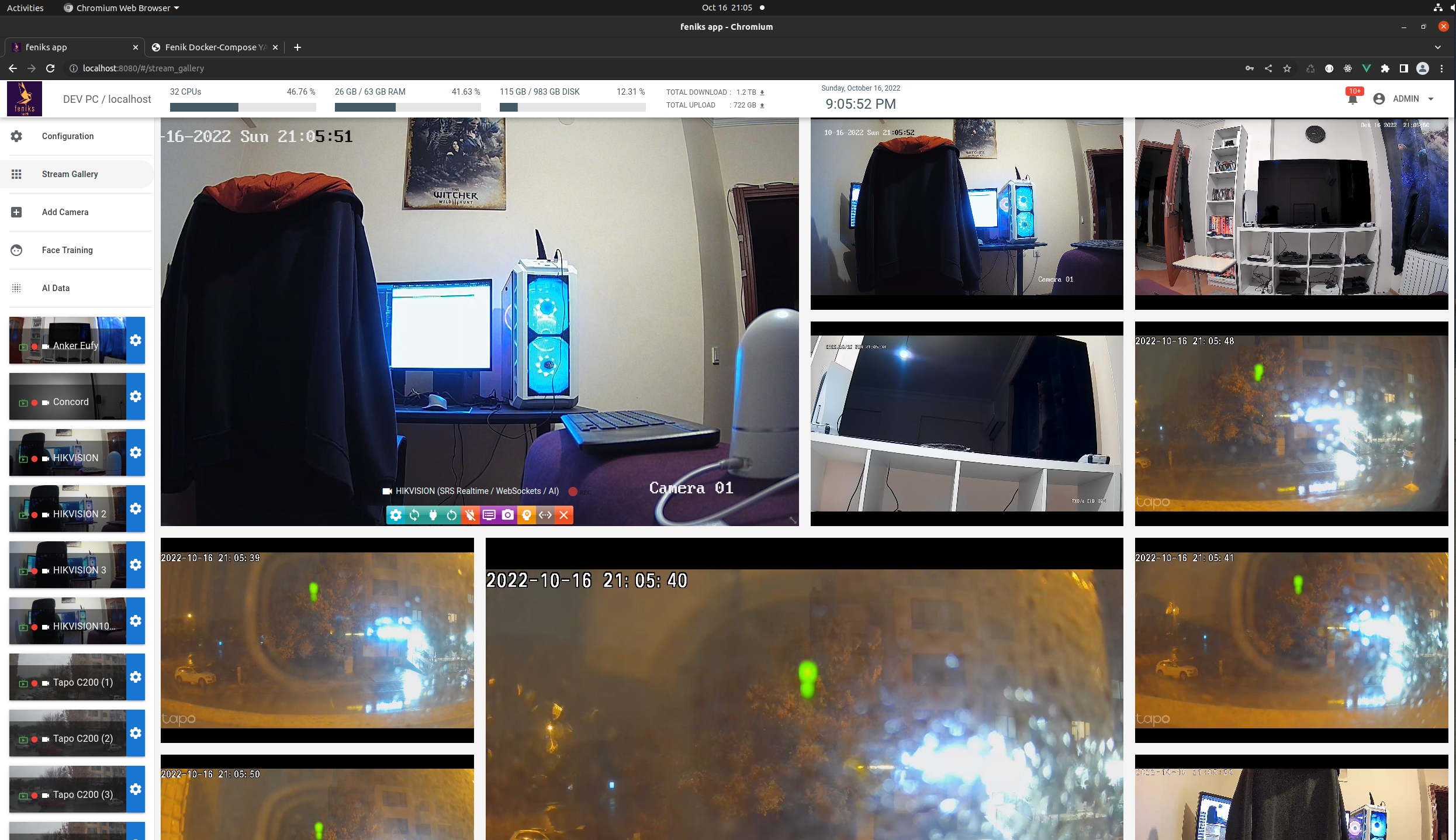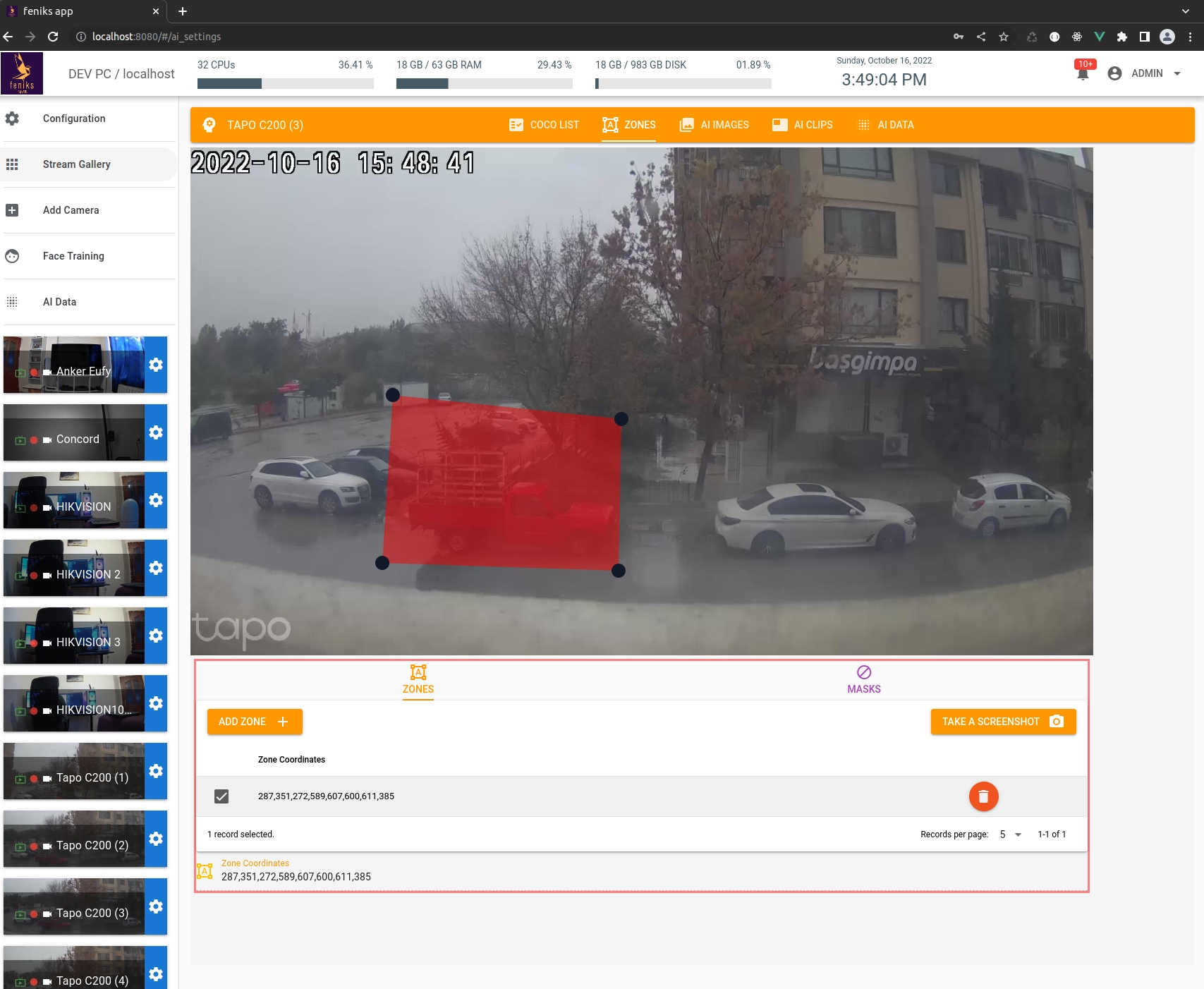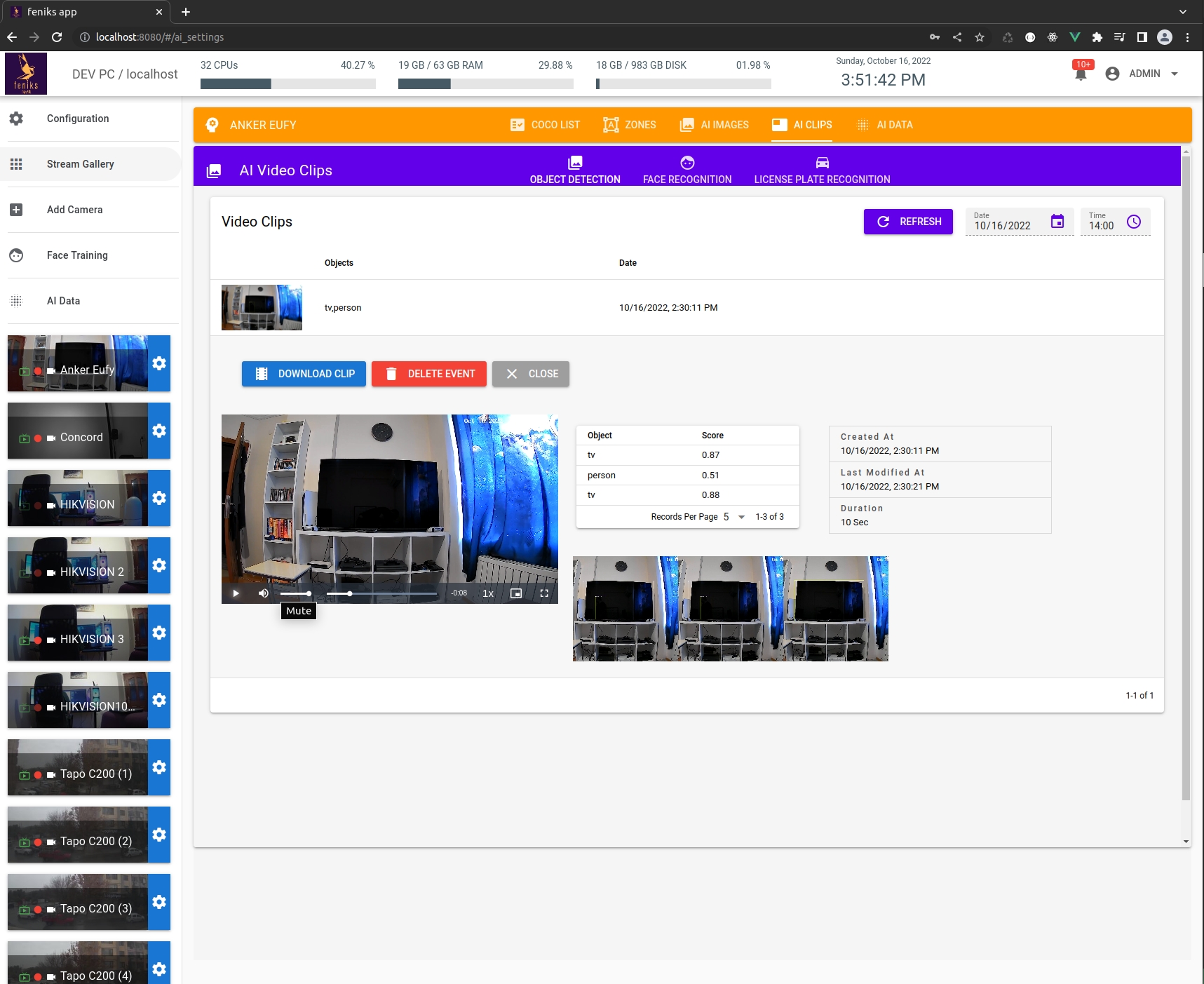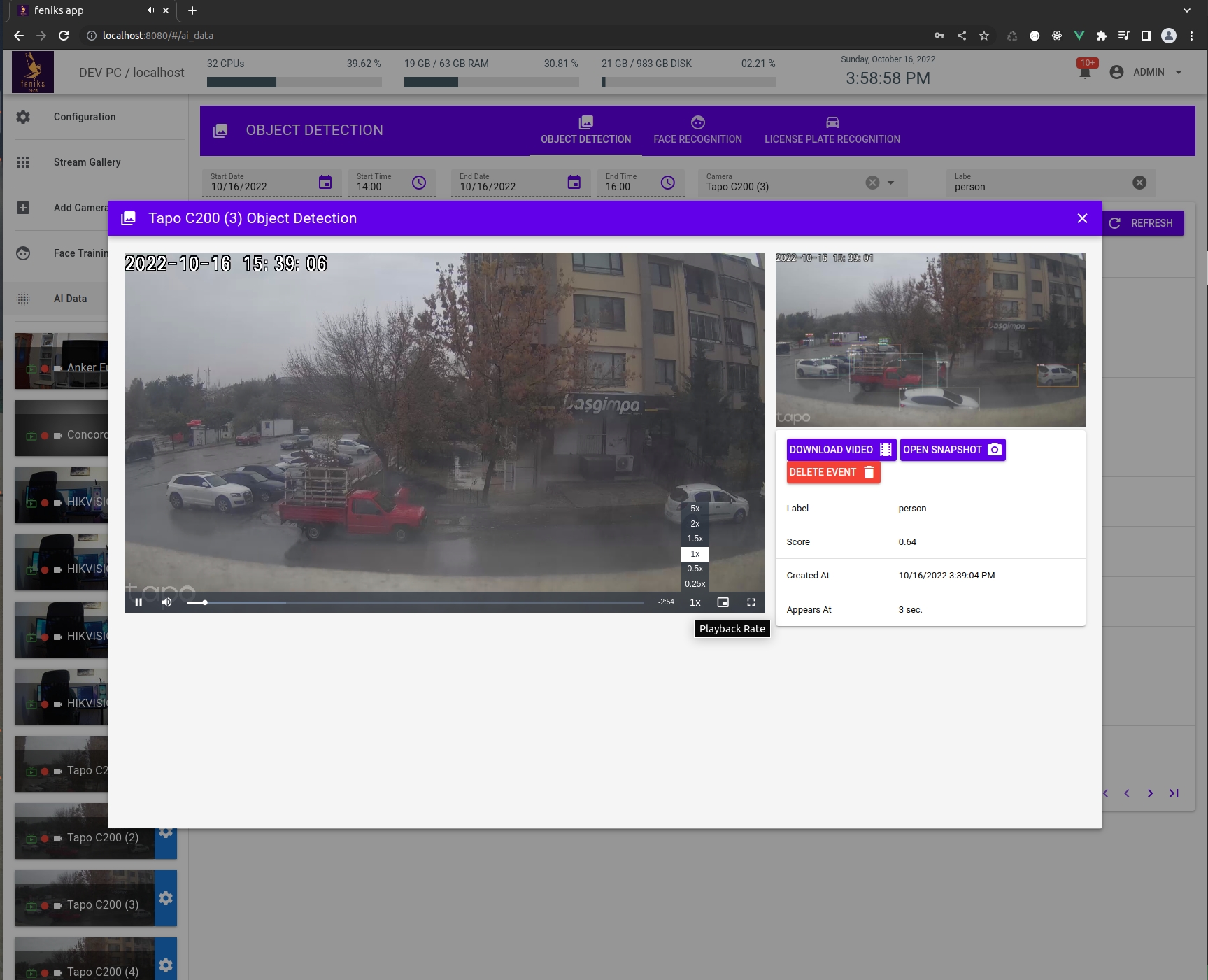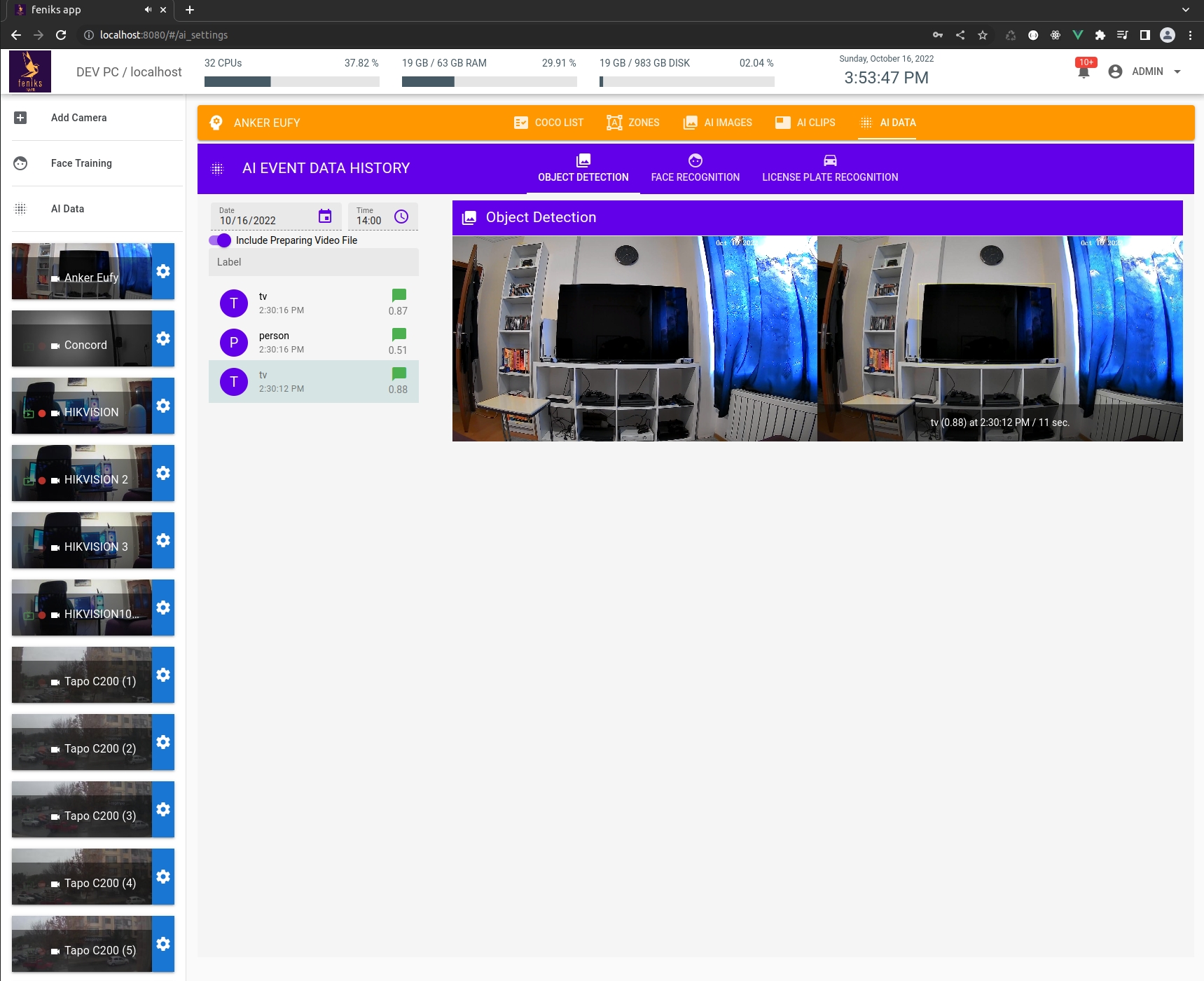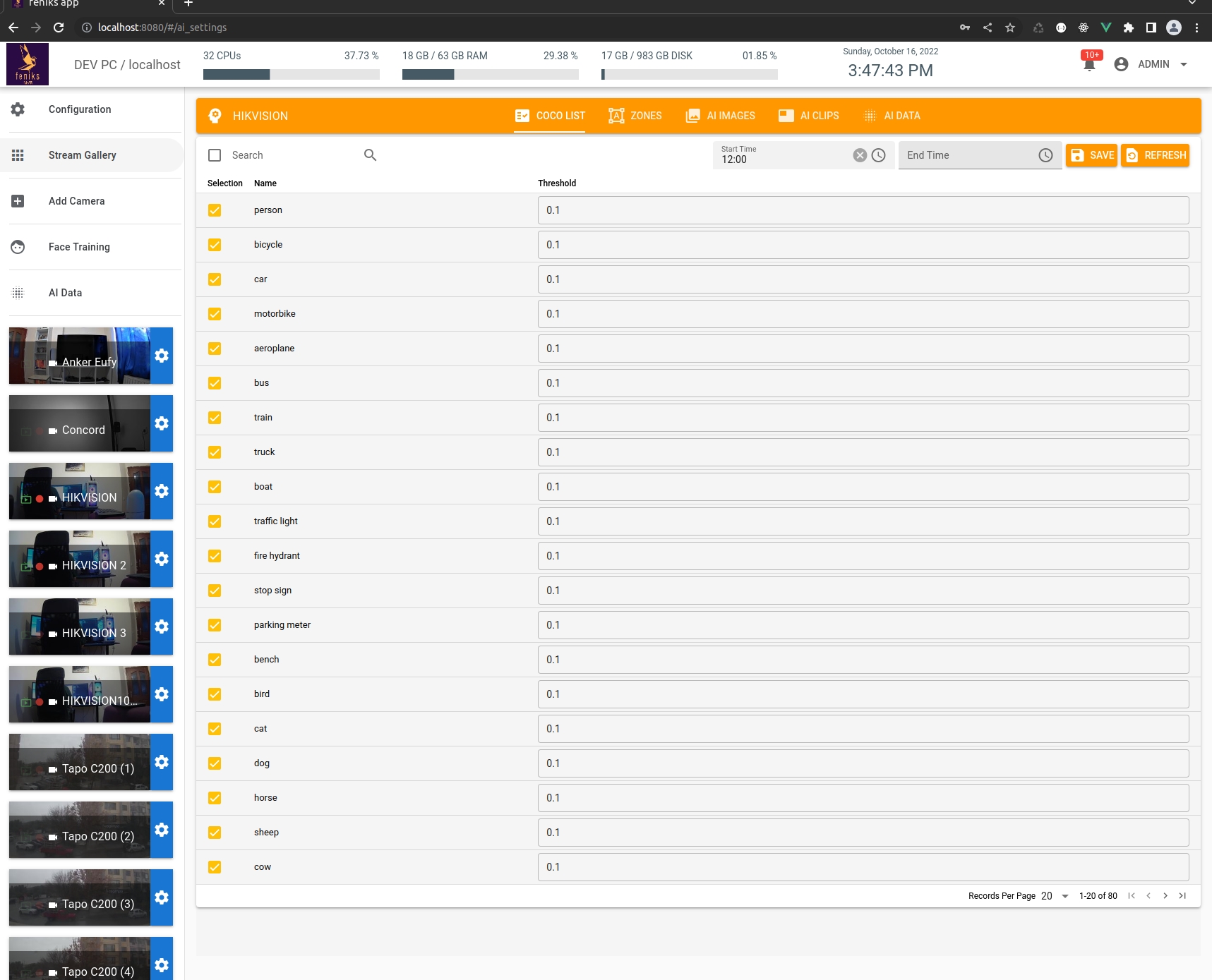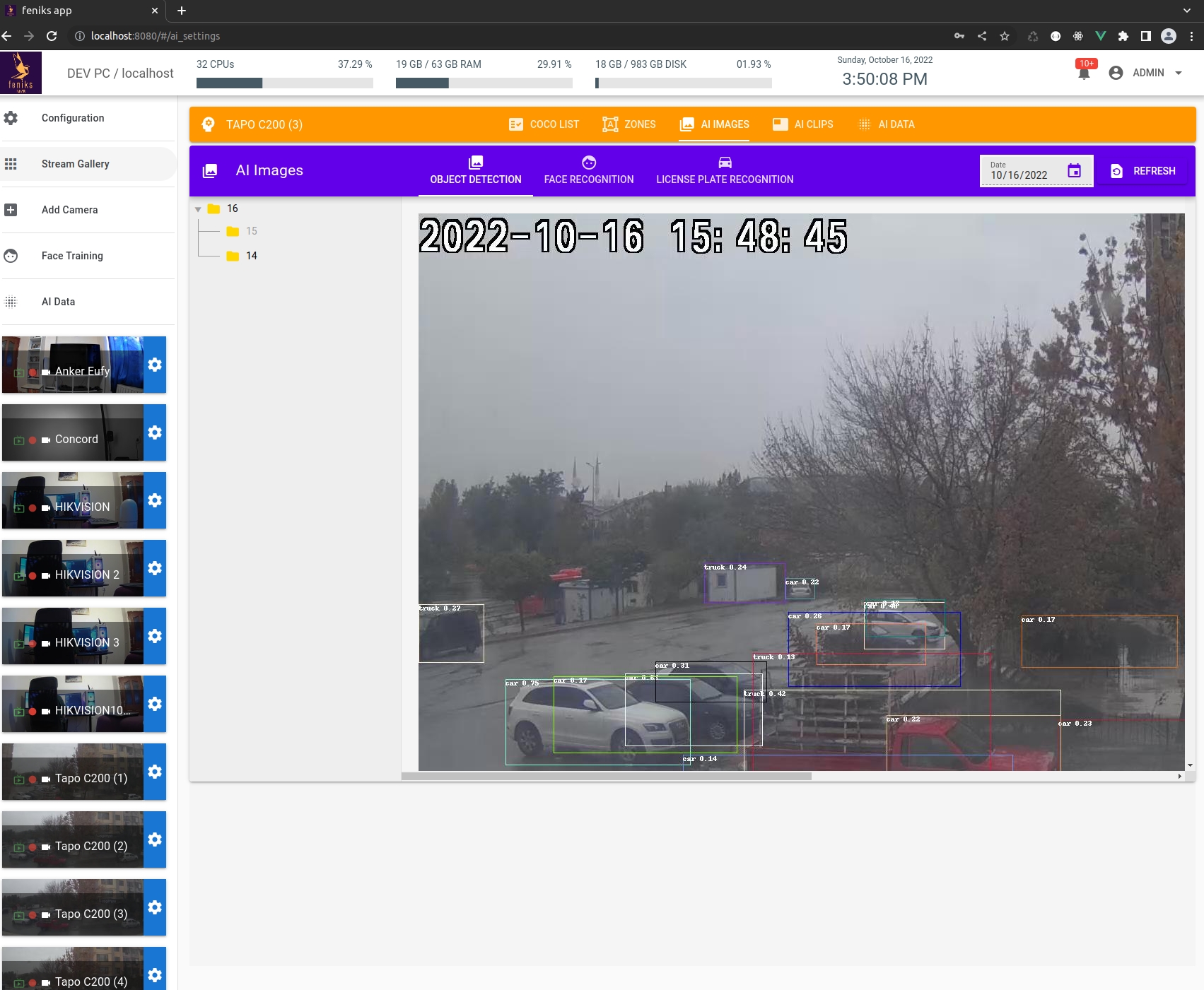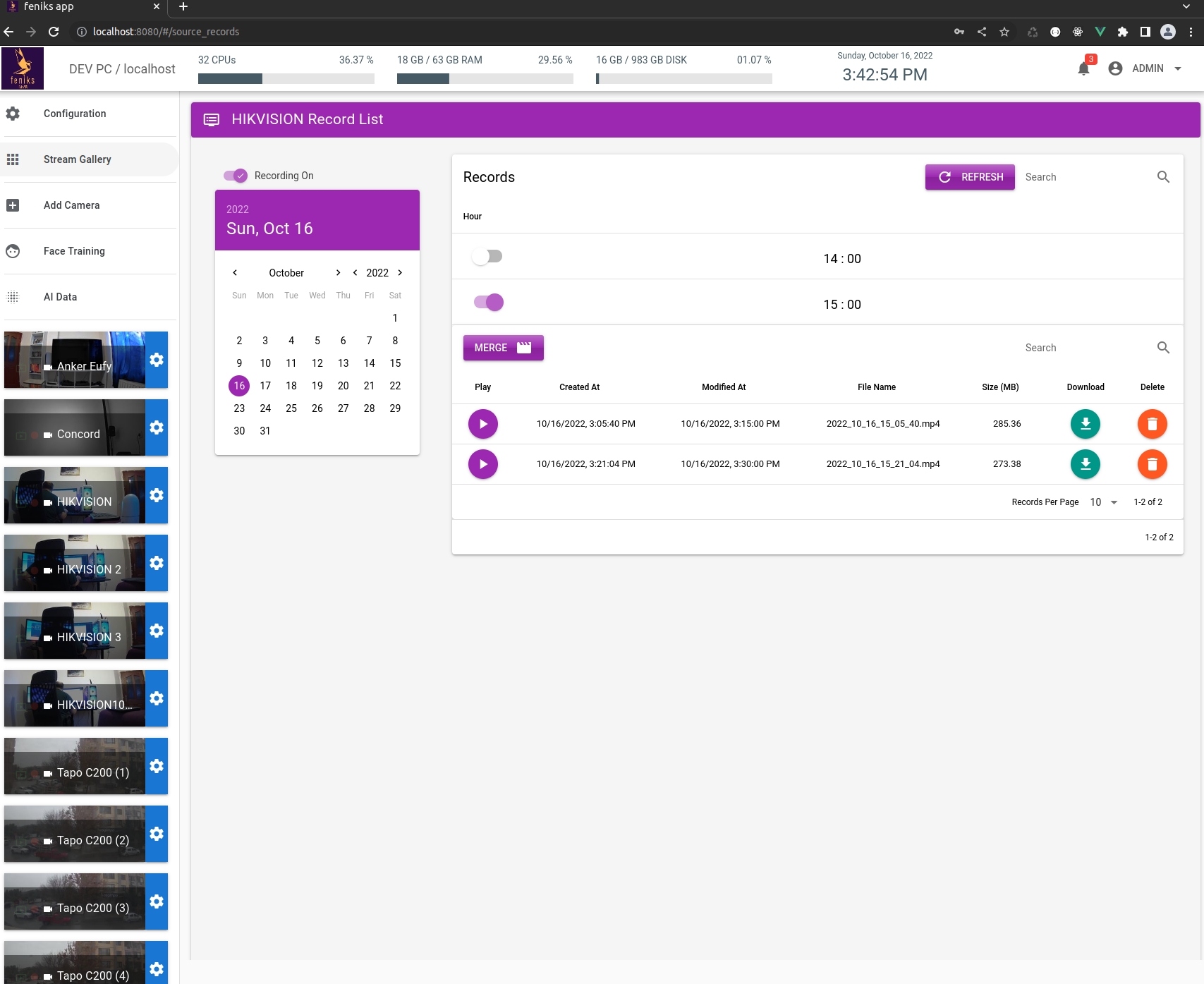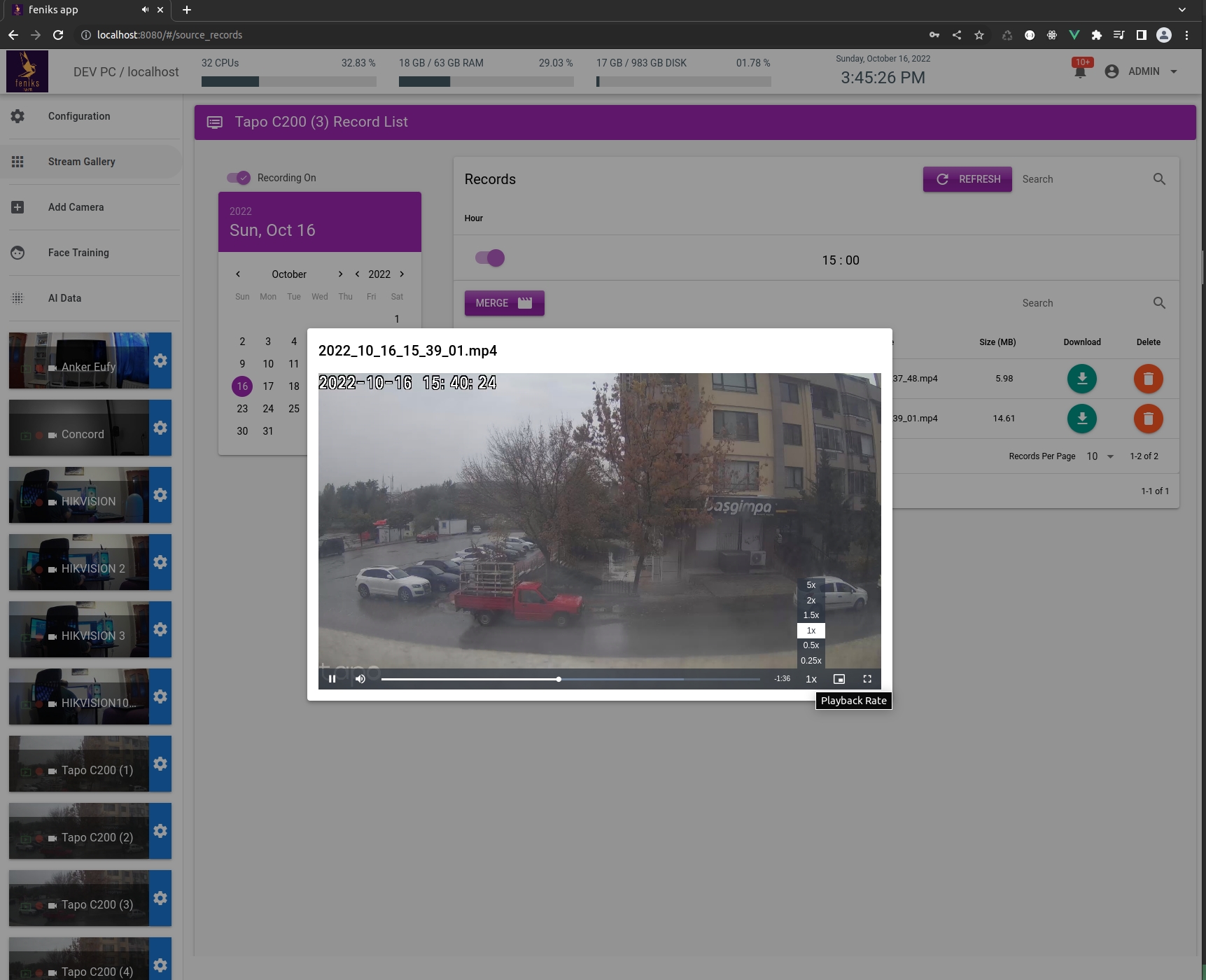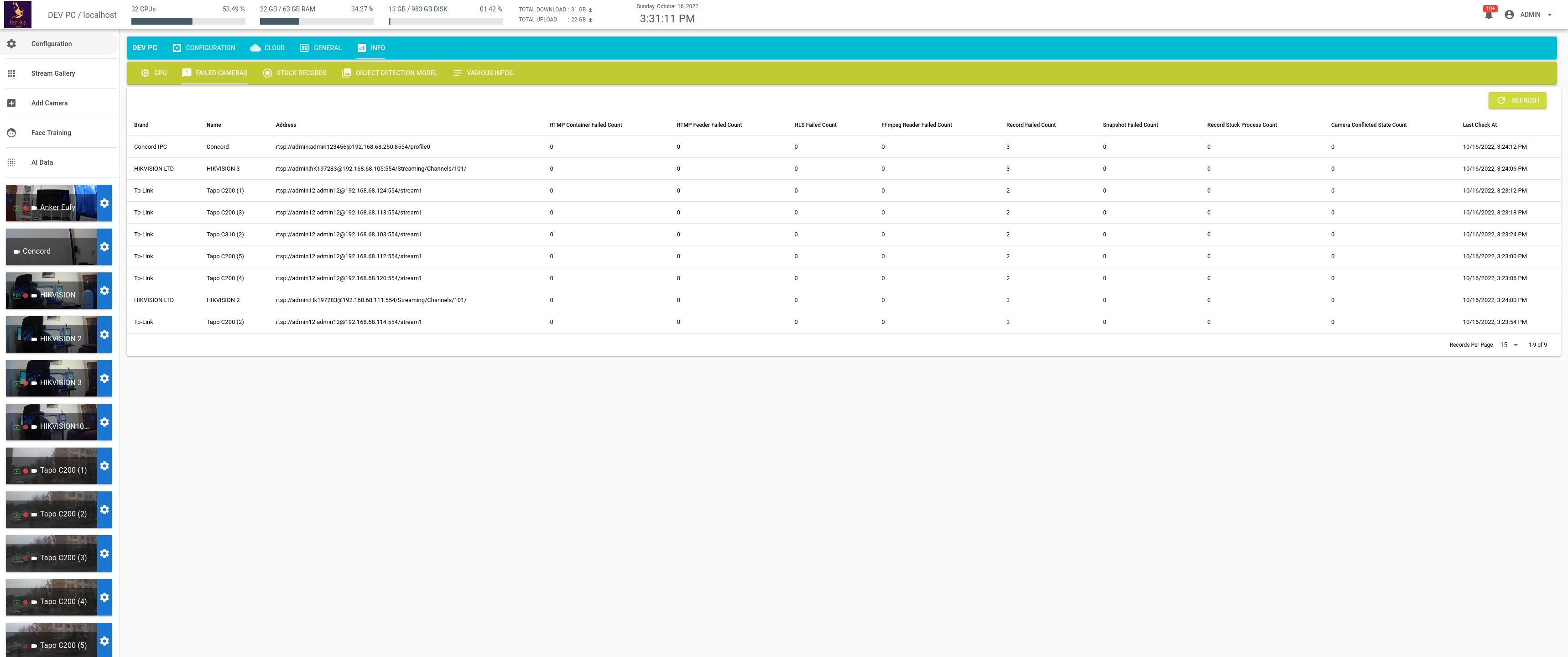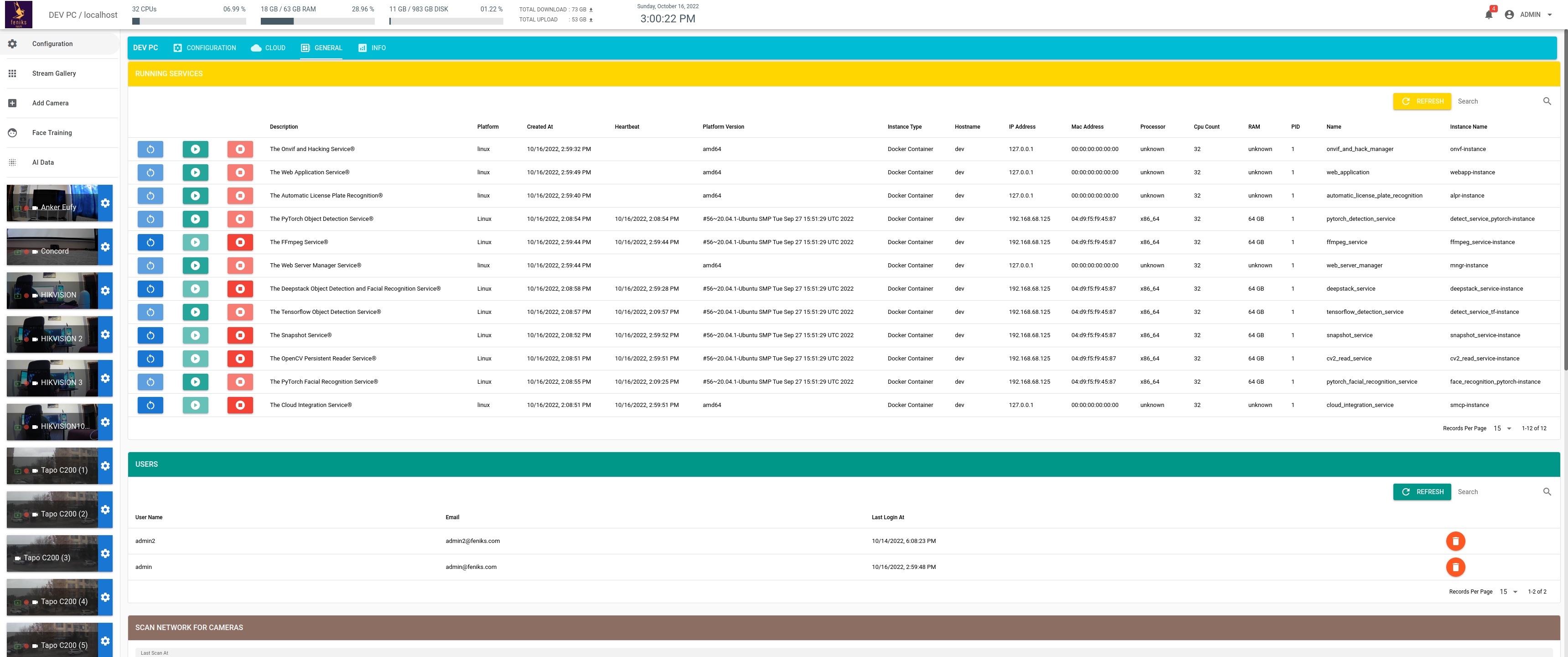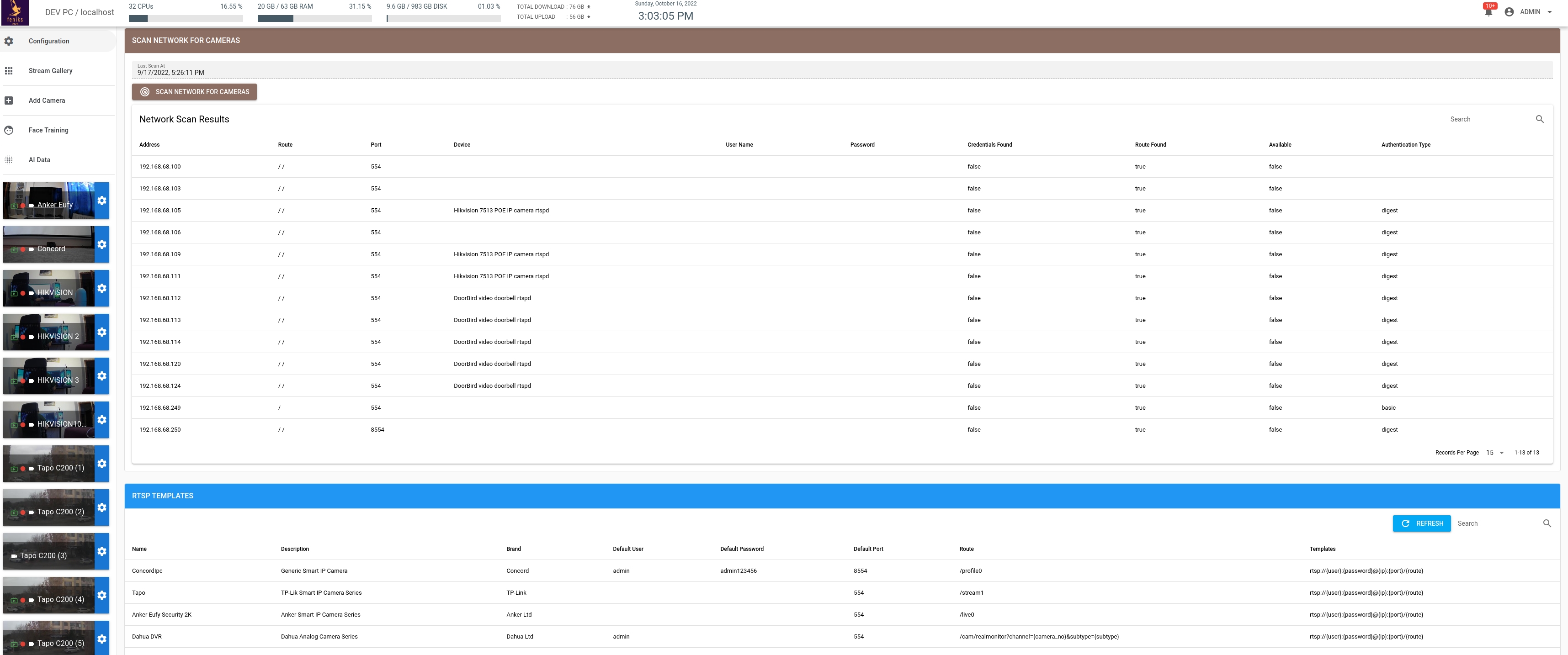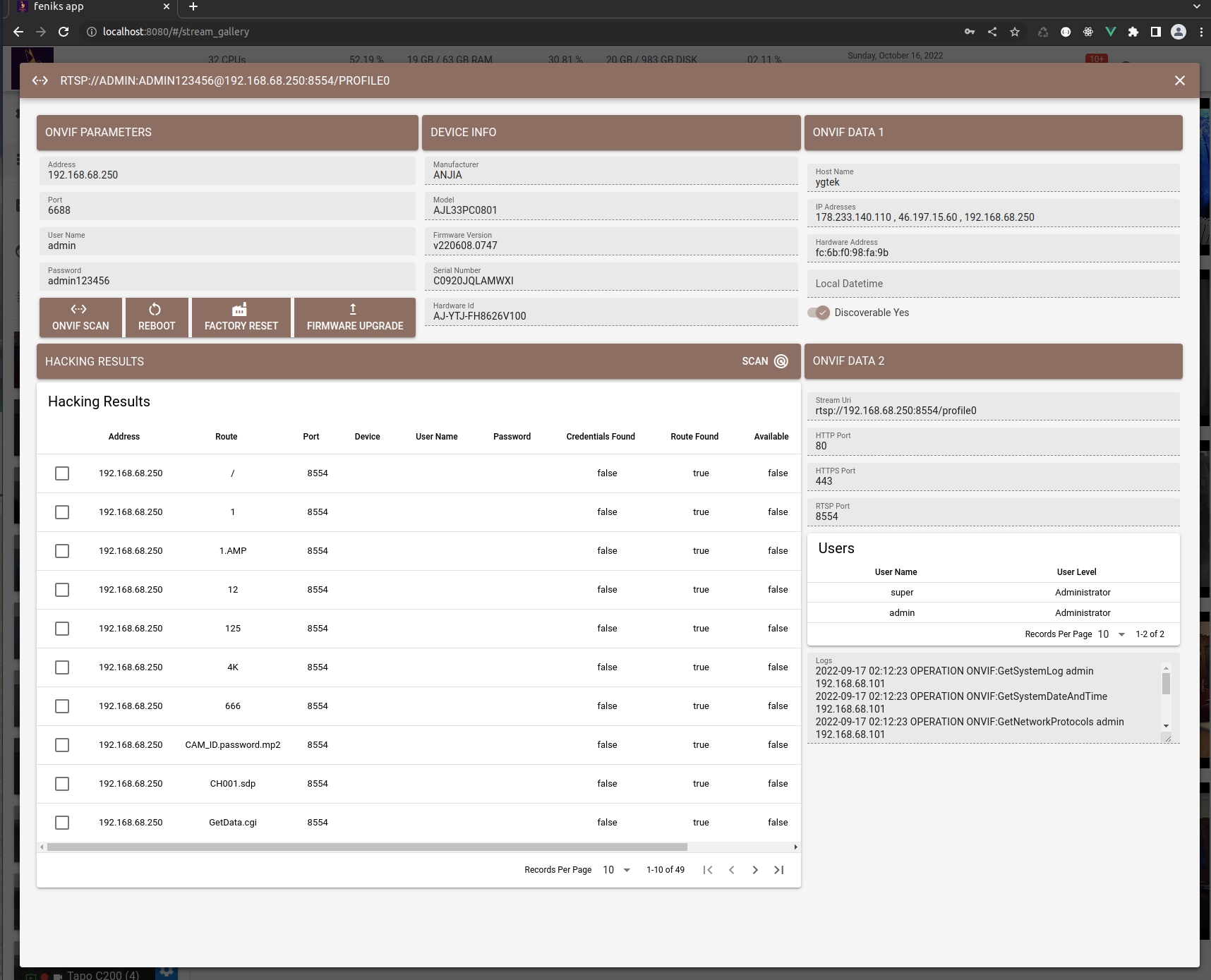- Connect any source FFmpeg supports and start streaming with low latency.
- Stream and record your videos 24/7 in both H.264 and H.265 formats directly from your browser..
- Detect 80 different objects, recognizes human faces and car plates.
- Query your AI data fast & easy by date, time, camera, label, score and color.
- If you want more, develop your own custom AI service and easily integrate with Feniks.
Demo Link (Runs on Nvidia Jetson Nano 4GB)
- The installation process can be done effortlessly since all services are dockerized and can be run by Docker-Compose in one single command. I' ve created a wizard to make generating Docker-Compose file easy.
- Install Docker on your system: https://docs.docker.com/get-docker/
- Install Docker Compose: https://docs.docker.com/compose/install/
- Create docker-compose.yml file by using the wizard
- Open a terminal from the location where the generated docker-compose.yml file is located.
- Run 'docker-compose up' command to start Feniks.
- Open your browser and navigate to 'http://localhost:8080' after all service is initialized.
-
Feniks consists of 11 different services. Those are:
- The FFmpeg Service For Live 7/24 Streaming, Snapshot and Recording (Python).
- The Object Detection Service (Python).
- The Snapshot Service (Python Multi-Process)
- The Facial Recognition Service (Python, PyTorch).
- The Plate Recognition Service (Golang).
- The DeepStack Service (Python).
- The Onvif Service (Golang).
- The Cloud and Notification Service (GoLang).
- The Web/Websockets Server Service (Golang).
- The Web Application (Javascript/Typescript, Vue3, Quasar).
- The Persistent RTSP Reader Service For AI (Python).
-
Runs natively on Linux.
-
Uses FFmpeg to handle video, audio, snapshot, probing and streaming.
-
Uses Redis as a main NoSql database and message broker.
-
MongoDB or SQLite is used for AI Events and query databases.
-
The web application supports more than one user and node server.
-
The UI app was developed by using Vue3 & Quasar. It uses gridstack.js to support highly customizable (like resize, dragging) video players.
-
Supported Deep-Learning Frameworks: PyTorch, Tensorflow and the Nvidia Jetson Library and can be selected from the Config page.
- PyTorch: YOLOV5, AlexNet, VGG, GoogLeNet, MobileNetV3. For more information: https://pytorch.org/vision/stable/models.html
- Tensorflow: Resnet V2, SSD, Faster RCNN, EfficientDet. For more information: https://tfhub.dev/tensorflow/collections/object_detection
- Nvidia Jetson: LPDNet, PeopleNet, ResNet-50, SSD. For more information: https://developer.nvidia.com/ai-models
-
Automatic plate recognition performs very well since it has a built-in job scheduler and LPR docker containers can be scaled up horizontally.
-
It has a built-in watchdog mechanism to monitor all processes and recover them.
-
It can scan the whole network to find cameras which have RTSP broadcasts. You don’t need to find cameras’ IPs to register the system. All is done automatically.
-
You can search detected objects by their color in the Smart Search section. Other search options like shape, size, barcode, etc. will be added in the future.
-
All running node services can be viewed on the UI app. All Services can be started/stopped by using the services page.
-
The services are tested on x86 workstation, Dell Intel x86 laptop, Raspberry PI (ARM664) and Nvidia Jetson Nano.
-
It supports multiple storages. You can assign any storage to any camera.
-
Broken / failed connections are shown in the information page. If a stream fails more than once in a given time, a notification will be sent to receivers (users) by the cloud provider service.
-
Supported Stream Types are shown below:
Hardware Demand Latency Compatibility FLV * * **** HLS * ***** ***** WebSockets ***** * ***** WebRTC * * **** -
Supported video codecs for both streaming and recording are:
- H.264 (Software, VA-API, NVIDIA, INTEL, RASPBERRY PI)
- H.265 (Software, VA-API, NVIDIA, INTEL, HEVC streaming is supported thanks to go2rtc)
- AV1 (Software, VA-API, NVIDIA, INTEL)
- VP8 (Software, VA-API, NVIDIA, INTEL)
- VP9 (Software, VA-API, NVIDIA, INTEL)
-
Supported audio codecs for both streaming and recording are:
- MP3
- AAC
- AC3
- DTS
- ALAC
-
Supported Video Container Formats:
- MP4
- WebM
-
Supported Media Servers:
- go2rtc (H265 & H264). If you are unable to play H.265 streams or video records on your browser, please check out this link.
- SRS (H264)
- LiveGo (H264)
- Node Media Server (H264)
-
All AI events (Object Detection, Face Recognition, Plate Recognition) can be queried by date, time, camera, label and score. All those fields are all indexed and saved as denormalized entities to provide best read performance even for big data.
-
It can store detected objects on clouds. Current cloud providers are:
- Google Gdrive
- Telegram
-
Feniks supports 3 different motion detection methods, those are:
- OpenCV: Superb accuracy precision but it costs relatively high CPU time
- Imagehash: good accuracy and high performance. It is suitable for low cost devices like Raspberry PI or Jetson Nano
- PSNR: Similar to Imagehash
-
Re-streaming via media server to reduce the number of connections to your camera
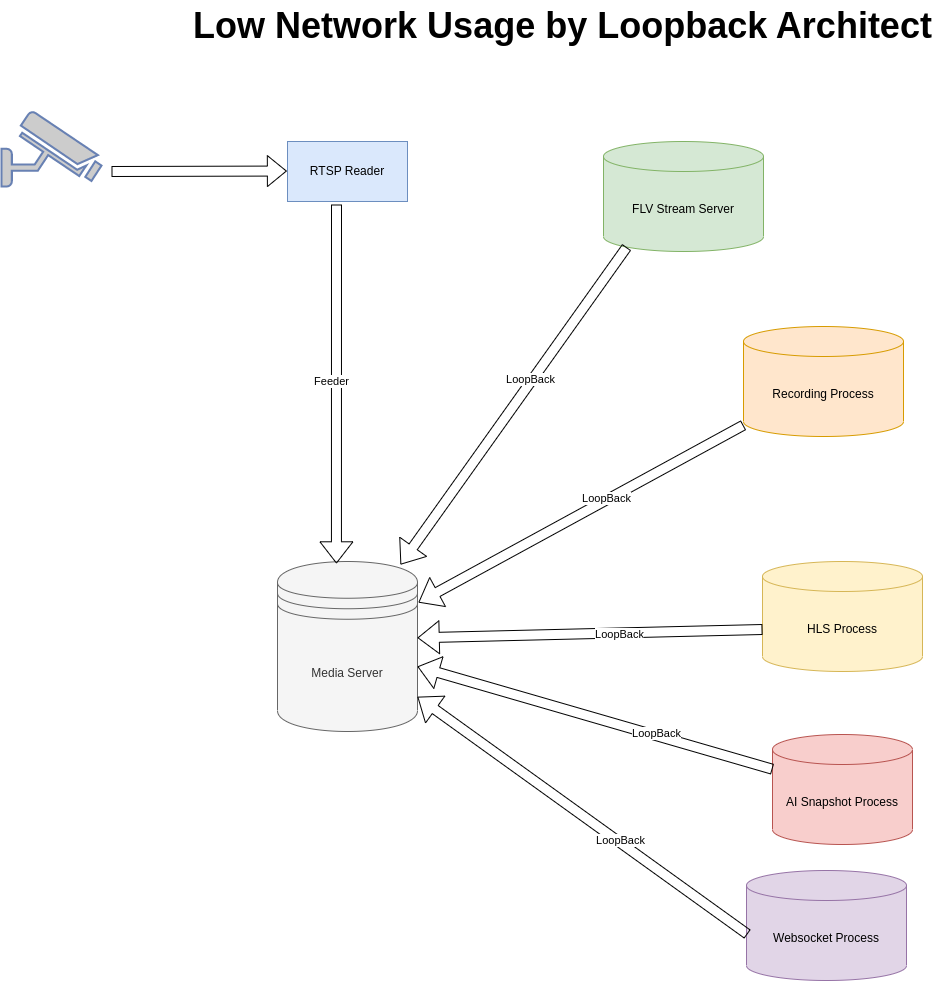
Currently Developing Features List (Ordered By Release Date)
- Positive/negative list support for facial recognition.
- Adding camera location info registration support by Google Maps.
- Adding Amazon S3, Microsoft OneDrive and Dropbox support as cloud providers.
- Making ONVIF support more compatible and superior like adding PTZ (Pan-Tilt-Zoom Support for Cameras) support.
- Adding Tensorflow/PyTorch Pose Estimation deep-learning models.
- Adding Windows support.



